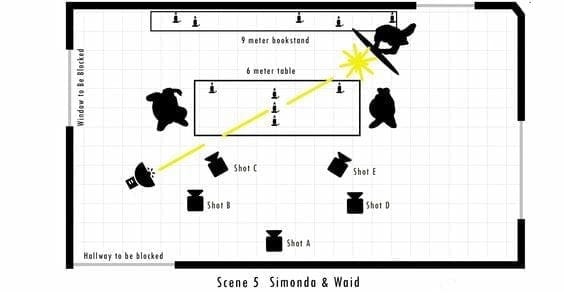Ever wanted to know what a gaffer is? Ever even heard of one? Well this article is here to tell you exactly what a gaffer is. Once you’re done reading this I bet you’ll be dreaming of becoming one one day. On the other hand, if you’re looking for a gaffer check out our Crew List! Now, let’s start learning.
What is a Gaffer?
The Gaffer is the head of the Electrics/Lighting department on a film set. He is responsible for assisting the cinematographer with lighting and providing power to the set. They work directly with the cinematographer to achieve the look of the film the DoP is going for. Being a gaffer is a crucial job and requires plenty of knowledge. It’s not a job that just any random person can fall into, it requires years of professional experience. All gaffers should strive to be learning, and on top of, the latest equipment and technology.
It is a very stressful and difficult job, but is also extremely gratifying and can pay very, very well. Especially if you own the equipment that the production is using. Plus, you get to actively see your contribution to the film’s final product.
Responsibilities
- The Gaffer executes the Cinematographer’s lighting plan. This is the main responsibility as a gaffer.
- Head of the lighting department. With help from your right-hand-man the best boy, you tell the rest of the lighting technicians to run power, set lights, and do whatever else needs to be done on set.
- Prep for the show. Before the show even starts, you’ll meet with the DoP and Key Grip to discuss what lighting and other equipment is necessary for the run of the show. You’ll continually need to prepare as the show goes on. Some scenes will require special equipment for specific shots.
- Act as a second pair of eyes for the DoP. As the scenes are being lit, the gaffer must act as a second pair of eyes for the cinematographer. When rolling you should look for stuff like ugly shadows, hot spots, and over/under exposure.
- Look for any opportunity to make the scene look more interesting. This is difficult and a little touchy as some DoPs prefer a gaffer who will only execute their plan. As you gain experience and build a relationship with a certain cinematographer and begin to understand their preferences this will become easier.
Skills
- Creativity. Being a gaffer involves an amazing combination of creativity and technical skill, but creativity is very important. You might need to do something out of the ordinary or come up with interesting solutions on the spot.
- High level of technical skill & knowledge. You need to know how to use all the gear and be able to get the most out of fixtures in any number of situations. As well as have a basic understanding of cameras, ISO’s, and latitude.
- Leadership. You must communicate clearly and give solid instructions to the people working under you. All it takes is mixing up a couple of words and you can completely misdirect your team and waste a lot of time. Learn to communicate effectively.
When lighting a scene the cinematographer will decide placement of each fixture to meet the desired look. The DoP may express what they’re going for in several different ways. One of the tough things about this industry is that every piece of gear has multiple names, and you’re going to have to know them all if you want to be a successful gaffer.
Even though the cinematographer is responsible for the overall look of a film, as the gaffer’s relationship with various cinematographers grows they may be given more or less freedom depending on the situation. In some situations, depending on the size of the production, the gaffer will be allowed to light the backgrounds, add last-minute lights or act as a second unit DoP.

On Set
When call time hits, report to the Cinematographer while the people under you are unloading the truck, running cable, and pulling fixtures. You should discuss a plan for the day and be ready for whatever is coming.
A Gaffer should always be around during blocking. It’s important to know how the scene is going to play out. Here are a few tips on what you should look for during blocking:
- Actors movements. This will give you a good idea of where you’ll need to light. Based on the actors movements you’ll get a good idea if you have to move any lights outside and where the key light might end up.
- Safe places to run or hide cable. You might get lucky and be able to use set dressing to hide cable. If necessary, you can ask the Art Department to help you hide some cable.
- Existing practical lamps. A lot of DoPs love practicals. Look out for them. Sometimes the art department will just put them out because they look nice. Get them powered, throw in a bulb and put a dimmer on it. Even if it doesn’t get used, it’s still great to have it ready for when the DoP suddenly decides they want it on.
When the blocking is done discuss the lighting with the cinematographer. Delegate their instructions and start lighting the scene. When they begin to start shooting, try to get to a video village. If possible, be at the same one as to DoP. Keep an eye out for anything bad you think the DoP won’t like. Sometimes you’ll notice something that was overlooked.
Want to be a Gaffer?
Like any job on set, being a gaffer can be very stressful, but it can also be a ton of fun and satisfying. It might not be the kind of job everyone wants but to some it’s the best. Did this article make you want to be a gaffer? Let us know! If you’re looking for more information on gaffers, check out these videos.
